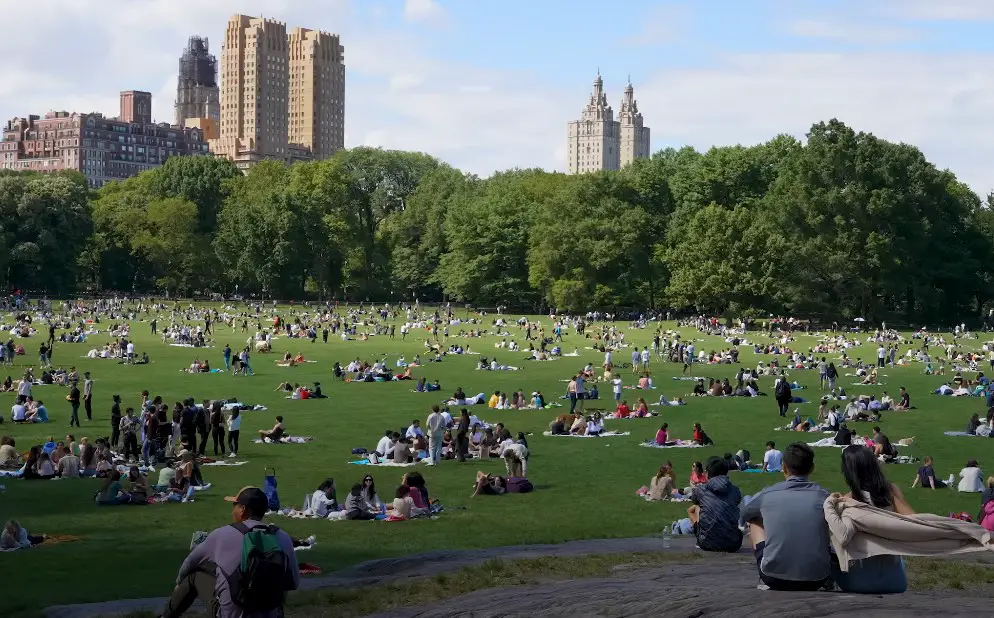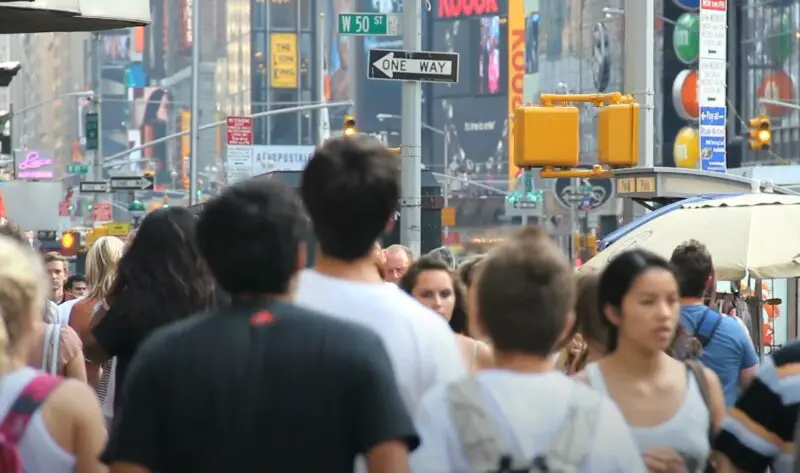Living in New York City changes you. The pace is relentless, the noise never stops, and space feels like a luxury you cannot afford. It is a city where people are always on the move, working harder, staying up later, and squeezing everything they can out of each day. It sounds exciting—and it can be—but it is also exhausting in ways no one really talks about.
Everyday routines here can feel like a challenge. Groceries need hauling up stairs, commutes are packed with people, and finding a moment to yourself is rare. You adapt quickly, but the city has a way of sneaking up on you. Sleep gets shorter, stress gets higher, and even your health takes hits you do not notice until much later.
Living here is not just about the energy or opportunities. It is about learning how to deal with constant pressure while balancing your well-being. Let us get into what this city does to your health, both the obvious and the surprising, without sugarcoating it.
Impact of the Pace

Living in New York City pushes people to adapt to an intense, fast-paced lifestyle that impacts physical health in both obvious and subtle ways. The demands of the city can lead to unique challenges, from commuting stress to sleep deprivation, and even cardiovascular risks. Below is a closer look at how this lifestyle leaves its mark:
Stress and Cardiovascular Issues
- Chronic stress levels among New Yorkers are among the highest in the country. Long commutes, financial pressures, and job competition contribute to elevated stress hormones, increasing risks of heart disease.
- A recent report highlighted that cardiac arrest survival rates in the city are only 20 percent, the lowest in over a decade, partly due to delayed emergency responses caused by traffic congestion.
Sleep Deprivation
- The city’s “24/7 culture” means many residents sacrifice sleep. Studies show that more than 40 percent of New Yorkers experience poor sleep quality, leading to long-term effects like obesity, diabetes, and weakened immunity.
Physical Activity vs. Sedentary Work
- While the city encourages walking due to limited parking and expensive transportation, most residents also spend long hours sitting in sedentary jobs.
- The average New Yorker walks 7,000 steps daily, but this is often offset by prolonged hours at desks or in front of screens.
Nutritional Habits
Grabbing quick meals is common in New York, with many residents relying on street food and takeout. While convenient, this often leads to diets high in processed foods, salt, and unhealthy fats. Therefore, adding supplementation to your meal plan would be a wise choice. If you are looking for some, the most convenient solution is to use an online vitamin shop.
Access to fresh produce is easier in some areas due to farmers’ markets, but food deserts remain a challenge in underserved neighborhoods.
Mental Health Challenges
The constant noise, crowded spaces, and unending demands can take a toll, leading to widespread struggles.
High Stress and Anxiety Levels
- A survey by the NYC Department of Health found that nearly one-third of residents experience high stress levels daily. The main contributors are housing instability, job insecurity, and financial pressures.
- Noise pollution, one of the highest in the nation, is linked to increased anxiety and difficulty concentrating.
Depression Rates
Around 8 percent of adults in New York City report symptoms of major depressive disorder, higher than the national average.
Access to professional services remains uneven, with underserved communities facing long wait times for affordable care.
Loneliness Despite Crowds
Living among millions does not always mean feeling connected. A recent study found that over 40 percent of New Yorkers report feelings of loneliness, particularly among young adults and seniors.
- The transient nature of city life, with people frequently moving in and out, makes it harder to form lasting relationships.
Overdose and Addiction Concerns
Overdose deaths, disproportionately impacting Black and Latino residents, highlight the ongoing mental health crisis related to substance abuse.
In 2023, over 3,000 residents lost their lives to overdoses, signaling a need for better addiction services.
How Central Park Supports Well-being

Central Park is more than a landmark; it is a lifeline for millions of New Yorkers navigating the challenges of urban living.
Designed in the 19th century with public health in mind, it continues to play a vital role in promoting physical and mental health across the city.
- Spans 843 acres
- 42 million visitors annually
Physical Health Benefits
- The park’s extensive trails, fields, and bike paths encourage exercise for all fitness levels. Regular use of these amenities helps residents improve cardiovascular health and maintain active lifestyles.
- During the pandemic, Central Park became a crucial space for socially distanced exercise, reinforcing its importance for public health.
Mental Health Reprieve
- Natural environments have been proven to combat urban stress, and Central Park is no exception. The combination of open skies, greenery, and water features provides a calming effect, reducing symptoms of anxiety and depression.
- For children and seniors, the park offers a safe space for recreation and community-building, which is critical for mental well-being.
Environmental Contributions
- Central Park acts as the “lungs” of New York City, improving air quality by filtering pollutants and producing oxygen.
- It also helps moderate city temperatures by providing a cooling effect, which is particularly valuable during heatwaves.
Urban Living and Its Strain on Access to Healthcare

Healthcare access in New York City is as complex as the city itself. While it is home to some of the world’s best hospitals, the challenges of affordability, overcrowding, and systemic disparities mean that healthcare remains out of reach for many residents.
The realities of urban life often amplify these issues, leaving certain populations more vulnerable.
Unequal Access Across Boroughs
Residents in wealthier neighborhoods have significantly better access to healthcare facilities compared to those in lower-income areas. For example, Manhattan has almost double the number of primary care doctors per capita compared to the Bronx.
Long wait times for appointments in underserved areas often lead to delayed diagnoses and worse health outcomes for low-income families.
Medicaid Overload and Financial Barriers
- Over 60 percent of New York City residents rely on Medicaid or other public health insurance programs.
- Reports suggest widespread fraud in Medicaid enrollment, with an estimated $20 billion lost annually.
Public Safety Concerns

Public safety is a critical factor influencing health in New York City. Rising crime rates and safety concerns in certain areas create stress for residents, which directly impacts their mental and physical well-being. While the city is safer than it was decades ago, recent trends show troubling increases in specific crimes, adding to the challenges of urban living.
The issue of safety is particularly relevant in spaces like Central Park, where a rise in robberies and assaults has made some residents think twice about using the park, especially after dark.
These issues are not isolated. A city as densely populated as New York sees the interplay of socioeconomic factors, such as income inequality and housing instability, that can exacerbate crime rates.
For example, areas with fewer community resources and higher unemployment often experience more incidents of violence and property crime, creating a cycle of insecurity and health risks.
Pollution and Environmental Factors Affecting City Life
View this post on Instagram
New York City’s environment presents a complex mix of challenges that significantly impact residents’ health. Air quality, noise levels, and other environmental factors contribute to various health issues, reflecting the city’s intricate relationship with its surroundings.
Air Quality Concerns
Despite improvements over recent decades, air pollution remains a pressing issue in New York City. The New York City Community Air Survey indicates that fine particulate matter (PM2.5) pollution causes approximately 2,000 deaths, 1,400 hospital admissions for lung and heart conditions, and 3,750 emergency department visits for asthma each year.
Recent studies have raised concerns about specific sources of air pollution. For instance, research found that pollutant levels on subway platforms averaged nearly ten times the World Health Organization’s recommended limit, posing serious health risks to daily commuters.
Noise Pollution
Noise pollution is another significant environmental concern. The New York City Department of Health and Mental Hygiene reports that nearly one in six adults experience ringing in their ears or hearing loss due to loud noise exposure. Additionally, about 20 percent of residents are frequently disturbed by noise at home.
Data from the city’s 311 service shows a substantial number of noise complaints, reflecting widespread disturbance. Specific areas, such as neighborhoods near LaGuardia Airport’s “Tennis Climb” flight path, experience noise levels reaching up to 90 decibels, comparable to a revving motorcycle, leading to health issues like anxiety and cardiovascular problems.
Environmental Factors
Urban heat islands, limited green spaces in certain neighborhoods, and waste management challenges further affect residents’ health. While areas like Central Park provide relief, other parts of the city lack such amenities, leading to disparities in environmental quality.
FAQs
Conclusion
Living in New York City is a unique experience that offers opportunities and excitement, but it also comes with significant health challenges. The fast-paced lifestyle, environmental factors, and systemic inequalities shape the physical and mental well-being of its residents in ways that cannot be ignored. While Central Park and other initiatives provide valuable resources for health and wellness, issues like pollution, noise, and unequal healthcare access continue to affect quality of life.



